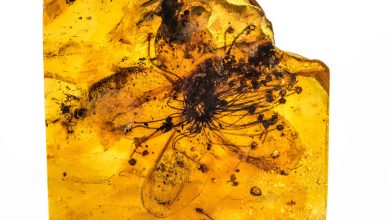Cockroach Reproduction Has Taken a Strange Turn

When a male cockroach wants to mate with a female cockroach very much, he will scoot his butt toward her, open his wings and offer her a homemade meal — sugars and fats squished out of his tergal gland. As the lovely lady nibbles, the male locks onto her with one penis while another penis delivers a sperm package.
If everything goes smoothly, a roach’s romp can last around 90 minutes. But increasingly, cockroach coitus is going really, weirdly wrong, and is contributing to roach populations in some places that are more difficult to vanquish with conventional pesticides.
Back in 1993, scientists working at North Carolina State University discovered a trait in the German cockroach, a species that inhabits every continent except Antarctica. Specifically, these new cockroaches seemed to have no affection for a form of sugar called glucose, which was strange because — as anyone who has ever battled against a cockroach infestation knows — cockroaches normally cannot get enough of the sweet stuff.
So, where did these new, health-conscious cockroaches come from?
It seems we created them by accident, after decades of trying to kill their ancestors with sweet powders and liquids laced with poison. The cockroaches that craved sweets ate the poison and died, while cockroaches less keen on glucose avoided the death traps and survived long enough to breed, thus passing that trait down to the next cockroach generation.
“When we think of evolution, we usually imagine wild animals, but actually, it’s also happening with small animals living in our kitchens,” said Ayako Wada-Katsumata, an entomologist at North Carolina State University.
Dr. Wada-Katsumata and her colleagues have just introduced yet another wrinkle to the cockroach’s story: According to a study published this month in the journal Communications Biology, the same trait that might help a female cockroach avoid sweet-tasting poison baits also makes her less likely to stick around and mate with normal cockroach males.

A male cockroach, right, attracting a female cockroach with a fat-and-sugar mix extruded from the tergal gland. Some female cockroaches are becoming immune to this practice.Credit…Ayako Wada-Katsumada
This is because cockroach saliva is capable of rapidly breaking down complex sugars, like those found in the male’s courtship offering, and turning them into simple sugars, such as glucose. So when one of these glucose-averse females takes a bite of the male’s nuptial gift, it literally turns bitter in her mouth, and she bolts before he can complete the double barrel lock-and-pop maneuver.
“Great!” you may be thinking. “The fewer cockroach hookups, the fewer infestations we’ll have.” Not so fast, said the researchers.
“As to how this will affect the population, it’s really complicated,” said Dr. Wada-Katsumata.
That’s because, despite the hang-ups, glucose-averse cockroaches still find ways to do the deed.
In lab experiments, Dr. Wada-Katsumata and her colleagues showed that glucose-averse females are more skittish of males than wild-type cockroaches, which is what the researchers call the roaches without glucose aversion. However, they also found that glucose-averse males seem to compensate for this by more rapidly transitioning into sex after offering his gift.
“The glucose-averse females might spend, say, three seconds feeding on the male’s secretion,” said Coby Schal, distinguished professor of entomology at North Carolina State and an author of the study. “The wild-type male does not respond in three seconds. The glucose-averse male does.”
The researchers even have evidence that suggests that all of these new pressures are causing changes in the chemistry of the glucose-averse male’s nuptial gift potentially so he can continue attracting females.
From a scientific perspective, the German cockroach’s sugar saga shows how humans can drive both natural selection — the cockroaches that survive our poison traps — as well as sexual selection — the glucose-averse cockroaches who no longer want to mate with cockroaches that still offer sweet snacks.
“I think that’s what makes this so compelling,” Dr. Schal said. “The idea that humans impose very strong selection on animals around us, especially inside our home, and that the animals respond not only with physiological changes, but also with behavioral changes.”
The good news for consumers is that pesticide manufacturers share Dr. Wada-Katsumata and Dr. Schal’s enthusiasm for understanding cockroach evolution, and they are actively changing their cockroach-killing formulations to move away from glucose. But given how new this research is, it will take some time for those changes to make their way to the products on our shelves.
“The worst thing that you can have as a product is a bait that is not eaten by cockroaches,” said Dr. Schal.





